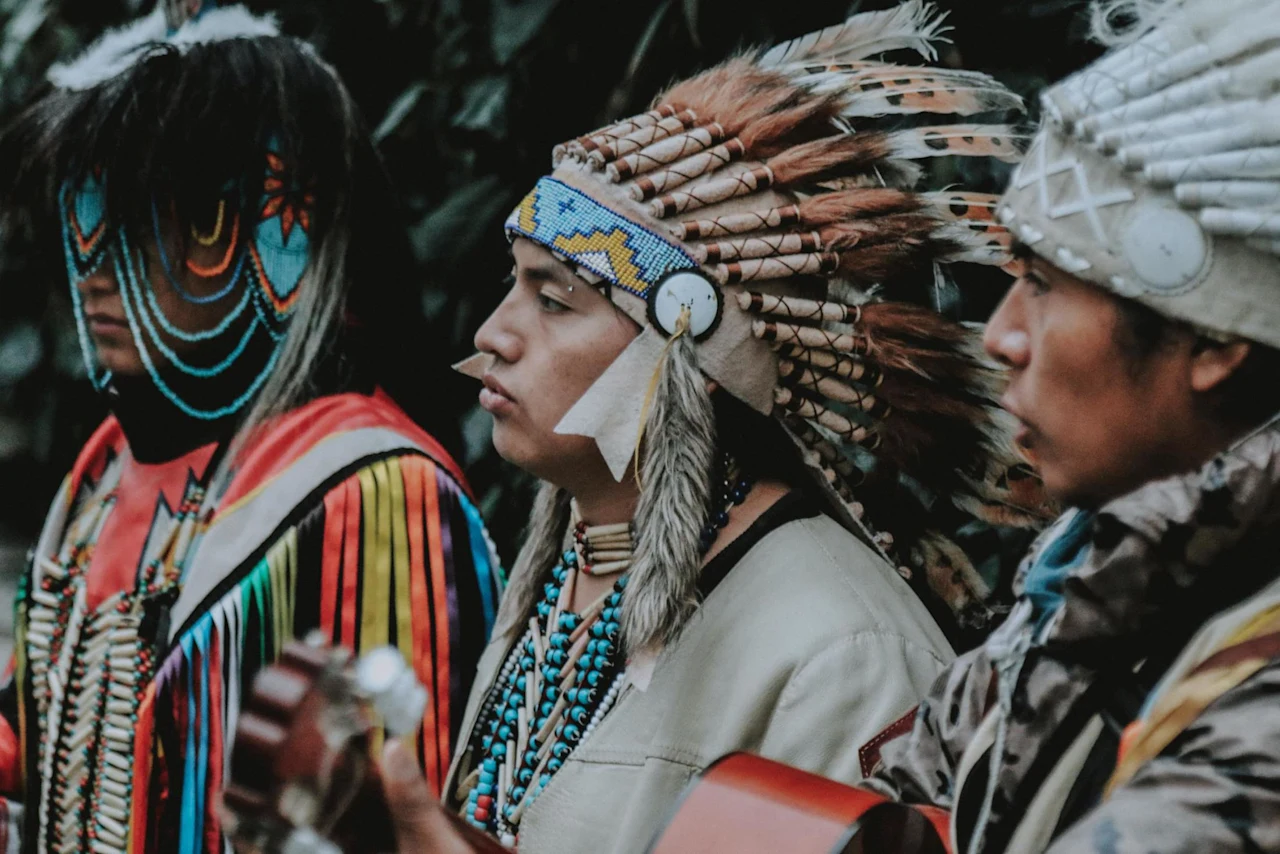
5 minute read
5 Things You Didn’t Know About Tribal Law & Estate Planning
November is Native American Heritage Month, and a great opportunity to learn more about Indeginous cultures. Trust & Will explores tribal law and estate planning.

Staff Writer, @Trust&Will
Trust & Will
November is National Native American Heritage Month, an observation that was established in 1990 by former President George H. W. Bush. The White House stated last week, “we celebrate Indigenous peoples past and present and rededicate ourselves to honoring Tribal sovereignty, promoting Tribal self-determination, and upholding the United States’ solemn trust and treaty responsibilities to Tribal Nations.”
A meaningful way to observe National Native American Heritage Month is to become more informed on the history, culture, context, and challenges of the Indigenous peoples of this land. For instance, did you know that there are over 570 federally recognized Native American tribes and Alaska Native Villages?
As a part of this observation, Trust & Will explores what it means to plan your estate as a Native American today. What are the considerations? What are the challenges? Is it equally as important for tribe members to have a Will or Trust? Here are 7 things that you might be learning for the first time:.
1.) Native Americans have the right to tribal sovereignty.
Did you know that Inediginous tribes abide by their own set of laws and regulations? Native American tribes have the constitutional right to tribal sovereignty. This means that each tribe has the power of self-government. However, the federal government has the right to override this sovereignty if necessary.
It’s important to remember the historical context of native tribes that lived on these lands long before the arrival of British colonists.
Tribal sovereignty should not be thought of as powers or rights that are delegated by the federal government. Rather, they are powers that weren’t taken away.
2.) Tribal Laws are not to be confused with American Indian Laws.
Native Americans deal with two sets of law: federal law and tribal law.
Federal American Indian law refers to the set of regulations, treaties, and executive orders that shape the relationship between Indigenous tribes and the federal government. Federal law recognizes native tribes as “domestic, dependent nations.”
These laws are designed to protect each tribe’s inherent sovereignty. Treaties often address issues such as land, hunting and fishing, and peace.
Concurrently, native tribes abide by tribal law. Each tribe has its own set of laws, regulations, and government. Most tribes have a government structure that is similar to the federal system, such as having an executive, legislative, and judicial branch. The laws developed by the tribe apply to the members of the tribe, as well as individuals that dwell within tribal territories.
3.) Tribal Courts can hear many types of cases, including Probate.
The Indian Reorganization Act in 1934 recognized the right of tribes to establish and enforce their own laws. These laws are separate from federal Native laws, and are enforced through each tribe’s judicial branch. The Act also recognizes each tribe’s right to establish its own formal court.
Tribal court structures vary from tribe to tribe. Some tribes establish their own formal tribal court that is controlled directly by the tribe and is designed to meet the needs of its members.
Other tribes may not have the funding to set up their own courts. Instead, they rely on the Courts of Indian Offenses - Code of Federal Regulations, or CFR Courts for short. These are regional courts that are operated by the Bureau of Indian Affairs. Member tribes share judges, prosecutors, and other court services.
Some tribes take a blended approach to their judicial system. They might rely on the formal CFR model for due process and dispute resolution while retaining their own model for tribe-specific needs.
The Pueblo of Isleta, located in New Mexico, offers an example of how a tribal court can be structured. The Isleta Tribal Court hears a wide variety of cases, including traffic, criminal, and civil cases. Like many tribal courts, this court hears probate cases.
4.) Fractionation is a real problem.
In the late 1800’s, the U.S. government implemented an “allotment” policy that gave reservation land ownership to individual Native Americans. Much reservation land is also held in Trust by the federal government for the benefit and protection of individual Natives.
Over the years, the problem of fractionation began to rear its head. Many Native Americans did not have an Estate Plan in place. Land allotted to individual Natives are adjudicated through state probate, but without a Will, they are subject to intestate succession laws.
This led to allotted lands getting fractionated into smaller interests that diminished with each passing generation. An original allotment of 100 acres could eventually be divided amongst hundreds of owners, making it very difficult to control or use the land in any way.
Further, it is common for Native individuals to marry non-Native individuals, meaning that land interest often passed to non-Native individuals and thus reduced land ownership amongst Indigenous peoples.
5.) The American Indian Probate Reform Act of 2006
In response to the critical issue of fractionation, the federal government enacted the American Indian Probate Reform Act (AIPRA) in 2006.
AIPRA replaced state laws with a federal probate code that is designed to limit fractionation. Ultimately, it was created to help keep land in the hands of Natives and incentivize the establishment of Wills.
Here are the general rules of AIPRA to note:
A Native land owner can essentially do what they’d like with their property, as long as they have a Will.
Land held in trust cannot be distributed to non-Natives unless they are your direct descendants.
In the absence of a Will, the surviving spouse receives a life estate that holds property until their death. The property is then passed to the children.
Land goes back to the tribe if there are no eligible heirs available (children, grandchildren, parents, or siblings.) Eligible heirs must be Native or within two generations of the decedent.
Single heir rule: if the land is less than 5 percent of the tract, then it can only be inherited by the oldest child or grandchild. The surviving spouse only gets a life estate if they live on the land. Otherwise, the land goes to the tribe. This helps to prevent fractionation.
The federal government, the tribe, and any co-owners have the option to purchase the land during probate, with the approval of the heir.
Indigenous estate planning is more important than ever.
Having an Estate Plan in place is the only way you can ensure that your property is distributed according to your wishes when you pass away. This process is important for any individual in the United States.
Native Americans have additional layers and factors to consider, making estate planning an even more critical process. A member of a tribe is dealing with two sets of probate rules; one applied by tribal law and one applied by the federal probate code through AIPRA.
Further, Native Americans cannot lean on automatic assumptions for property. Because of AIPRA, the usual rules of joint tenancy or right of survivorship do not apply. One must be careful to put a Will in place and name an heir for their land. Otherwise, the future of the land is determined by the tribe and federal law.
Natives must also be wary regarding the rules of who they can name as beneficiary to any trust property. Eligible beneficiaries must be of lineal descent. Further, if ownership is less than 5 percent, then only a single heir can be named to prevent fractionation. In the absence of a Will, and the absence of an eligible heir, the land can be purchased by the tribe or other co-owners.
Therefore, Indigenous land owners must be careful to put a Will in place and name an eligible heir to ensure the property transfer of their trust property.
Many individuals don’t get around to planning their estate because they are overwhelmed by the process. Further, they might hold a belief that estate planning is only for the wealthy. However, to the contrary, estate planning holds great benefits and protections for individuals of any income or tribal status.
At Trust & Will, we strive to provide estate planning services that are not only affordable, but are also convenient and easy to navigate. If you own trust land and want to ensure the property transfer of your property to your heir, it is critical to set up a Will. Find out how you can set up your Will in a matter of minutes through Trust & Will today.
Recommended for you

Estate Planning —4 min read
Estate Planning For Grandchildren

Estate Planning —4 min read
Estate Planning For Unmarried Couples

Estate Planning —4 min read
Estate Planning For Single People
Create your estate plan today.
Get Started